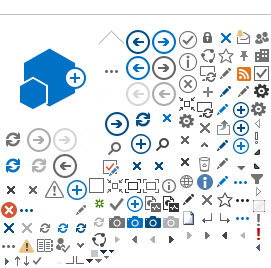?Stellenbosch 肆客足球 Mus?eum???????????????????
?Collections
?
Anthropological Collection
The Anthropology section of the 肆客足球 Museum is the privileged holder of an irreplaceable African collection.
The continuous exhibition is a striking display of objects from various regions of Africa. It offers a visual perspective of both unity and diversity in human society and culture.
Anthropology is, simply put, the science of studying modern and ancient forms of humanity, its cultures and social structures.
The standing exhibition reflects Southern African peoples including the Nguni, Sotho, Venda, Shona, Kavango and Bushmen/San people. There are also displays that represent West African cultures. The exhibition of Tiv (Nigeria) artefacts is of particular importance.
The exhibits display the diversity of different systems as affected by ecological, social and cultural contexts.
The visitor will be able to see the many ways that humanity adapted to environmental demand, how they subsisted economically and how relationships and social status were determined by kinship, age and gender. Of interest is what is regarded as aesthetically pleasing by different cultures and how symbolic representations were used in daily life. Also portrayed are different constructions of the life cycle and transition rites such as initiation and diverse value systems.
The focus is also on the way objects were manufactured and what materials and styles were used. Humans found diverse ways of combining functional, social, symbolic and aesthetic elements in creating objects.
The varied range of exhibitions provides insight into the close interplay of ecology, social structure and cosmology in African societies. It also shows that although culture specific structures, forms, functions and meanings may differ, the need to form relationships is universal. There are also universal ways of expressing ideas and engaging in certain activities including forming institutions.


Permanent Art Collection
The permanent art collection of Stellenbosch 肆客足球 (SU) dates back to 1919. Today, this large and important collection consists of more than 3 000 pieces and covers a wide variety of themes and expressive media. The works represent both local and foreign artists and span a period of about 150 years.
Like most public and educational institutions in our country, the 肆客足球, when building up its art collection, initially concentrated on purchases and donations of works that primarily had a bearing on its own past. It is noteworthy that from 1960 onwards about half the total collection of artworks came to the 肆客足球 as a steady stream of bequests.
The permanent collection includes the J du P Scholtz Collection, which is central to the permanent collection (it was largely on the strength of this collection that the SU Museum was founded); the Solomon Caesar Malan Collection, a remarkable collection of watercolours and drawings executed by this Swiss born English artist in 1839; the Peter and Catherine Freund International Printmaking Collection; a significant collection of Christo Coetzee's work; and the largest collection of Maggie Laubsers in South Africa. Some of the stand-alone treasures of the permanent collection are an important sculpture by the renowned sculptor August Rodin, an etching by Salvador Dali and a ceramic vase by Pablo Picasso.
The greater part of the SU permanent collection represents what is generally known as 'modern' art. Much of the collection comprises pieces selected because of the impact that they had on the country's past. In this respect, artists such as Moses Kottler, Anton van Wouw, Edward Roworth, Solomon Caesar Malan, WH Coetzer, JEA Volschenk, Hugo Naudé, Erich Mayer, Adolph Jentsch, Strat Caldecott, JH Pierneef, Florence Zerffi, May Hillhouse, Cecil Higgs, Maggie Laubser, Irma Stern, Walter Battiss, Alexis Preller, Gregoire Boonzaier, Edoardo Villa, Cecil Skotnes, Larry Scully, Paul du Toit, Christo Coetzee, Nel Erasmus, Erik Laubscher, Herman van Nazareth, Stanley Pinker, Judith Mason, Paul Emsley, John Muafangejo, Jackson Hlungwani, Leonard Matsoso, Collen Maswanganyi, Peter Clarke and Willie Bester are among the artists represented in the collection.
Our ever-growing collection contains a comprehensive number of nineteenth-century works. The artists of these works were mostly visitors to the Cape who recorded their travel experiences with pen and paintbrush. Today they are regarded as noteworthy precursors of the local landscape tradition.
??






Solomon Caesar Malan Collection
A mixture of luck and accident led to a Swiss-born Englishman from India painting a number of Cape scenes in 1839 and to this Africana treasure finding its way to Stellenbosch 30 years ago.
Solomon Caesar Malan (1812-1894) was a brilliant young Swiss student who went to study at Oxford. He became a British citizen and accepted a professorship in classics in Calcutta, India, in 1837. His wife, Mary, had to return to England because of poor health, and he accompanied her as far as the Cape, where he remained for four months during the winter of 1839 before returning to India.
During this short period, Malan, a 27-year-old amateur painter, produced approximately 90 unique paintings and sketches in pen, pencil, water colour and sepia wash: these included scenes of contemporary Cape Town and its environs as well as of his journey through Stellenbosch and Franschhoek to Genadendal and from there through the Helderberg basin back to Cape Town.
One could regard these works of art from the time before the invention of photography as the equivalent of the photographs taken by the modern tourist - a way of recording one's experiences.
His son, Arthur Noel Malan, published a biography of SC. A South African doctor, Philip Traub, came across a copy of this biography in a London junk shop in 1966. He saw the brief reference to the Cape sketches and went through a great deal of trouble to trace the owner of these works, Edward Malan, a descendant of SC.
A former Matie, the late Dr Avril Malan, also heard of these works and decided to try and bring this Cape Africana back to South Africa. Dr Malan bought the volume with 175 works including the Cape works as well as the Indian scenes. In 1968 he donated this to the 肆客足球 of Stellenbosch for safekeeping. In the same year, the 肆客足球 exhibited the collection and also published a book of the collection – a publication that has since become an Africana collector's piece. When Stellenbosch commemorated its 300th anniversary in 1979, a part of the collection was once again exhibited. Since then a part of the collection has been on permanent exhibition for the public.


Maggie Laubser Collection
There was a special relationship between the painter and printmaker Maggie Laubser (1886-1973) and Stellenbosch 肆客足球 (SU).
This relationship started in the 1950s and ended with her death about two decades later. Laubser's involvement with the SU bloomed because of the efforts of the late Prof HB Thom, who, from 1954-1969 was a rector of this university.
Laubser, who was strongly influenced by German Expressionism, bequeathed approximately 140 works to SU and in 1989/90 these works were fully restored.
Only a selection is exhibited in the SU Museum in the building that was formerly the Bloemhof Meisieskool where she received her secondary school education.
Along with about 30 works which the 肆客足球 acquired elsewhere before and after 1973, this large number of oils, watercolours and drawings is one of the most extensive collections of works by a single prominent South African artist in public possession. It includes about forty works which Laubser created during her early years as an artist when she spent time in the Netherlands (1913-14), England (1914-19), Belgium (1919), Italy (1920-21) and Germany (1922-24).
Although only a limited number of works is on exhibition, the viewer will nonetheless gain insight into the artist's oeuvre and her charming, humble and self-expressive artistic awareness.



 ?
?



